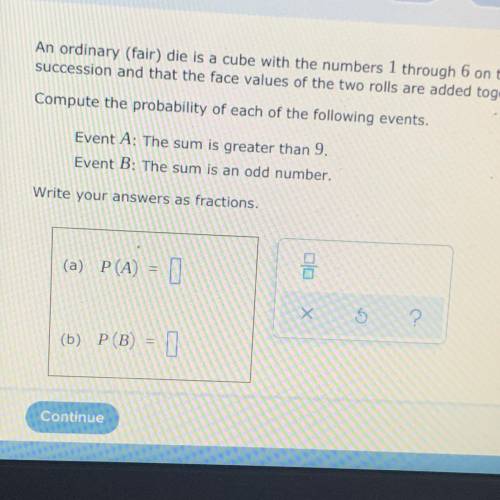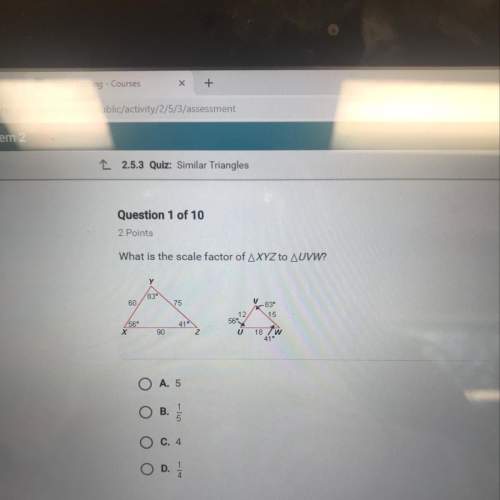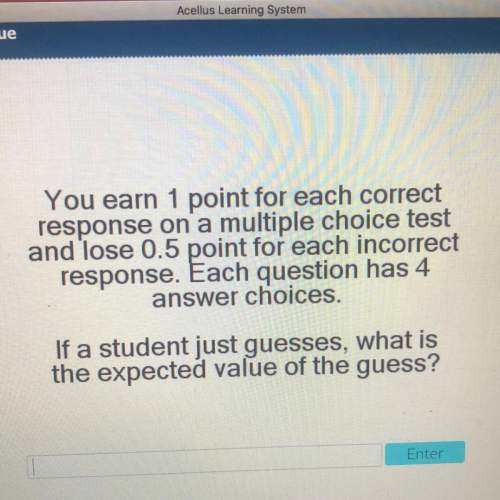
Mathematics, 12.03.2021 20:30, shadowgirl1213
An ordinary (fair) die is a cube with the numbers 1 through 6 on the sides (represented by painted spots). Imagine that such a die is rolled twice in
succession and that the face values of the two rolls are added together. This sum is recorded as the outcome of a single trial of a random experiment.
Compute the probability of each of the following events.
Event A: The sum is greater than 9.
Event B: The sum is an odd number.
Write your answers as fractions.


Answers: 1
Other questions on the subject: Mathematics

Mathematics, 21.06.2019 20:50, hinsri
The first side of a triangle measures 5 in less than the second side, the third side is 3 in more than the first side, and the perimeter is 17 in. how long is the third side? if s represents the length of the second side, which of the following represents the length of the third side? s-5 ws-2 s+ 3 next question ask for turn it in
Answers: 1

Mathematics, 22.06.2019 01:00, gomez36495983
If johnny ate 5 cans of sugar, but in the kitchen they only had 3. what did johnny eat? (he found a secret stash btw.)
Answers: 2

Mathematics, 22.06.2019 02:00, bchagnard2122
Grant simplified the expression 1.5(-3.2 + 2.5) his work is shown below explain the error in grants work
Answers: 1

Mathematics, 22.06.2019 03:20, trying1to1pass
Given a normal distribution with µ=20 and σ = 4, what is the probability that x> 24 x< 24 x< 24 or x> 24
Answers: 2
Do you know the correct answer?
An ordinary (fair) die is a cube with the numbers 1 through 6 on the sides (represented by painted s...
Questions in other subjects:


English, 16.07.2021 01:00


Mathematics, 16.07.2021 01:00




Mathematics, 16.07.2021 01:00

History, 16.07.2021 01:00








